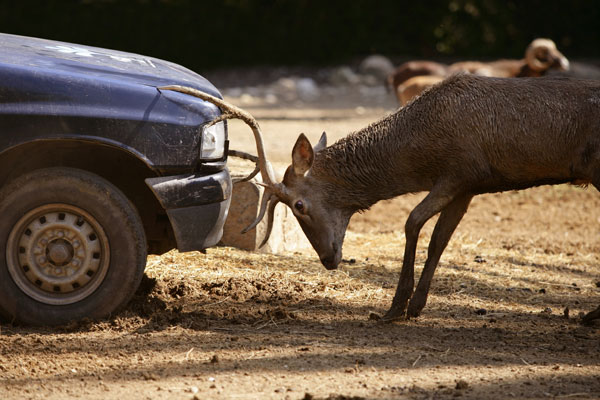
While driving is a necessity in daily life, it’s not a perfect form of transportation, and it tends to cause its share of collateral damage on a daily basis. We all swerve to avoid hitting innocent animals–both pets and wild–that dart across the street. Hopefully, with quick reflexes and advances in vehicle technology, you avoid more animals than you hit; but every now and then, you’ve probably made contact with an animal.
In those moments, when you’re overcome by emotion and guilt, it might be hard to figure out what to do. Based on the advice of many experts, here is what you should do if you hit an animal on the road.
Instructions if You Hit an Animal While Driving
Be thankful the animal didn’t hit you with their car
The first thing to do when you hit an animal is to safely pull over to the side of the road and take a deep breath. Take a moment to bring your feelings under control so you can assess the situation. Make sure that everyone in the car is safe, especially if you collided with a large animal.
Put your emergency lights on and any flares or traffic cones you have to warn other drivers to avoid the area, including where the animal is.
Determine if the animal is wild or domestic. If it appears to be a pet, try to get close enough to read the animal’s tag for a phone number or owner’s name.
You are obligated by law to report the accident if you hit certain types of animals, especially if it’s domestic or livestock. Call 911, find a call box nearby, or look up the number of the local authorities. Provide them with all the information you have of the situation, your position, and what you know about the animal.
The directions given by the police will determine your next steps of action. In most cases, they will:
- Take your information and tell you to leave, if it is a wild animal. They will send someone to clean it up later.
- Tell you to wait until someone can come and assess the situation.
- Or, direct you to a local animal hospital who will give you further instructions.
Some websites suggest taking the animal to a vet while others point out the liability and potential harm of moving an injured animal, so don’t make this decision on your own without getting instructions from the police. Place a blanket on the animal to keep it warm but don’t touch it unless told to do so. If you’re not a medical expert–especially not one on animals–don’t try to assess the physical condition of the animal and act on that assumption.
Take pictures of the scene for evidence to provide when you report the situation, including position of the animal, your car, and any damage done to your car (for insurance purposes too).
Sources: Axle Addict, Drive Like a Girl, Girlz Torque
Aaron is unashamed to be a native Clevelander and the proud driver of a Hyundai Veloster Turbo (which recently replaced his 1995 Saturn SC-2). He gleefully utilizes his background in theater, literature, and communication to dramatically recite his own articles to nearby youth. Mr. Widmar happily resides in Dayton, Ohio with his magnificent wife, Vicki, but is often on the road with her exploring new destinations. Aaron has high aspirations for his writing career but often gets distracted pondering the profound nature of the human condition and forgets what he was writing… See more articles by Aaron.









